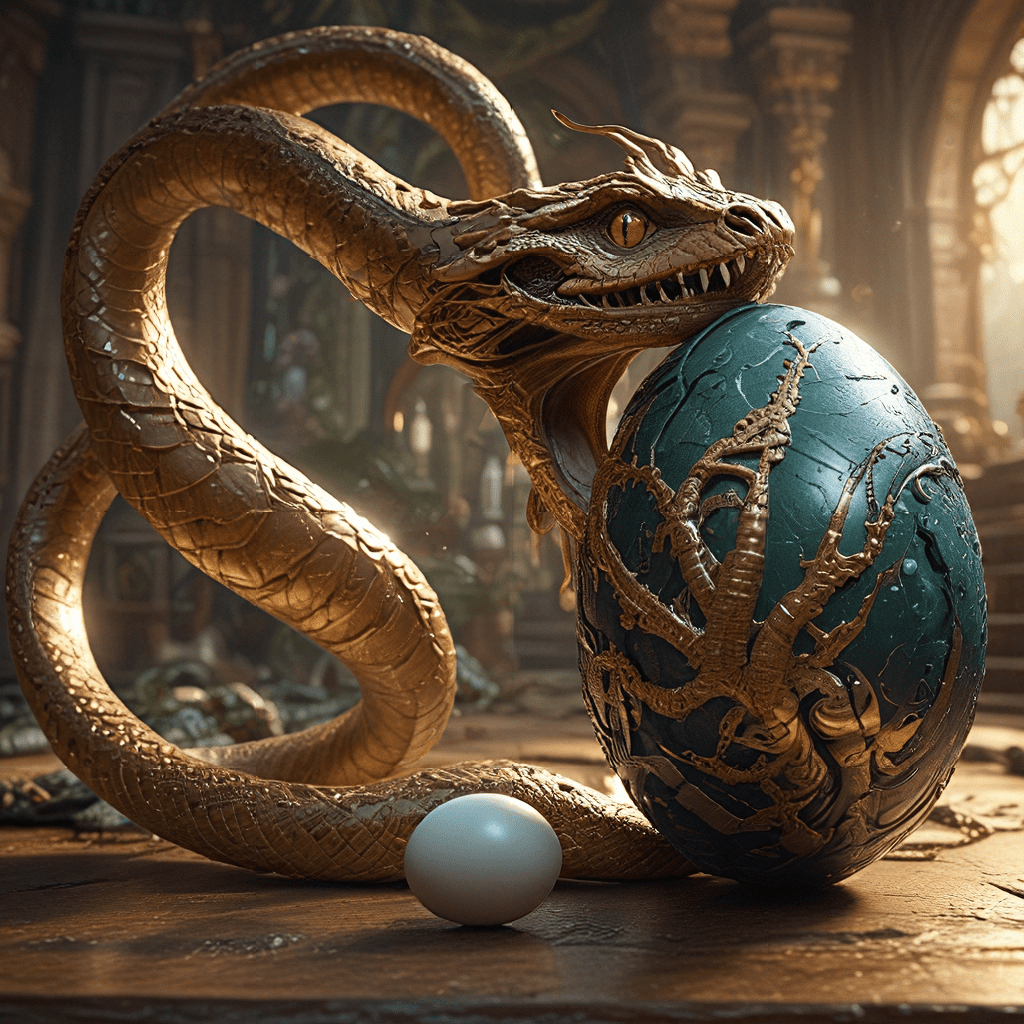I. Introduction: A Cosmic Mystery
The serpent and the egg – two seemingly simple symbols, yet they hold profound meaning in the ancient Egyptian world. These enigmatic motifs appear repeatedly in Egyptian myths, stories, and artwork, whispering secrets of creation, transformation, and the very essence of life itself. The serpent, with its sinuous form and shedding skin, embodies both chaos and renewal, while the egg, a vessel of potential, represents the birth of the universe and the emergence of life from nothingness.
II. The Serpent: Embodiment of Chaos and Order
In the Egyptian mind, the serpent was a creature of duality. It was seen as a force of chaos and disruption, representing the primal forces of the universe, often associated with darkness and danger. One of the most prominent examples is Apep, the serpent of chaos, who sought to devour the sun god Ra each night, bringing darkness and fear to the world. Yet, the serpent also symbolized rebirth and renewal, its shedding of skin representing a cycle of transformation and resurrection. Mehen, the protective serpent, coiled around the sun god Ra, symbolized protection and the cycle of life.
III. The Egg: The Primordial Seed
The egg holds a central place in Egyptian creation myths. It represents the primordial seed from which the universe emerged, a vessel of potential held within the vast cosmic ocean known as “Nun.” This egg, symbolic of the world’s origin, contains the forces that would shape the cosmos. It signifies the very essence of creation, the beginning of all things.
IV. The Myth of Atum: From Egg to Sun God
One of the most famous Egyptian creation myths involves Atum, the self-created god who rises from the primordial waters. Atum, the first being, emerges from the chaos of “Nun” as the sun god, bringing light and order to the world. This emergence is intricately linked to the egg, representing the world’s birth and the beginning of creation. The egg, a symbol of potential and creation, becomes the vessel from which the god Atum, the source of all things, is born.
V. The Serpent and the Egg: A Symbiotic Relationship
The serpent and the egg are not merely separate symbols but intertwine in Egyptian mythology, their connection reflected in rituals and iconography. The serpent, often depicted guarding the egg, signifies protection and a watchful presence over creation. This guarding role suggests a symbiotic relationship between the two, where the serpent ensures the safety and stability of the egg, the very essence of the world.
VI. Transformation and Rebirth: The Serpent’s Shedding
The serpent’s ability to shed its skin is a powerful symbol in Egyptian belief, representing the cycle of death and rebirth. This cyclical nature mirrors the transformation of the egg into the world and the god’s power. The serpent’s shedding, a process of renewal, parallels the creation myth, emphasizing the continuous cycle of life and death, transformation and rebirth – a cornerstone of Egyptian belief.
VII. The Serpent and the Egg in Rituals and Art
The serpent and the egg are prominent in ancient Egyptian rituals and art, their presence reflecting the deep symbolic meaning they held for the people of that era. The serpent is often depicted in tombs, guarding the deceased, signifying protection and a safe passage into the afterlife. In art, the serpent and egg motif appear in various forms, from sculptures and paintings to jewelry and amulets, showcasing the enduring influence of these symbols on ancient Egyptian culture.




